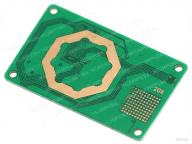7 Reliable Ways to Discover What Kind of Motherboard Do I Have
Learn what kind of motherboard do I have using seven proven methods. From Windows built-in tools to
What is a PCB? A Complete Guide to Printed Circuit Boards and How Circuit Boards Work
Table of Contents
ToggleA succinct answer suitable for featured snippets
PCB board = printed circuit board: a flat non-conductive board (e.g., fiberglass or epoxy) with conductive copper traces for electrical connection
Alternate terms: printed circuit boards, electronic circuit board, printed circuit board
Context: essential in nearly all electronic products
Definition: PCB stands for Printed Circuit Board
It mechanically supports and electrically connects components (ICs, resistors, capacitors) via copper traces
Used as a bridge between engineer intent and device functionality in modern electronics
Core function: copper traces form pathways for electricity, akin to roads routing signals
Construction: insulating substrate (often FR-4) + etched copper layers, sometimes laminated multi-layer for complexity
The board enables structured signal flow, controlled routing, and component integration
Key parts: traces, pads, vias (through-hole, blind, buried)
Electronics: resistors, capacitors, transistors, ICs – all mounted via SMD or through-hole
Example analogy from a reddit user:“A circuit board itself simply provides connections between electrical components. It’s a little bit like running wires between a bunch of other parts.”
Layer breakdown: substrate (FR-4), copper layers, solder mask, silkscreen
FR-4: flame-resistant fiberglass epoxy — common non-conductive base
Solder mask protects traces; silkscreen aids assembly labeling
Essential parts: integrated circuits, connectors, sensors, and other active/passive elements
These components interface via pads on the PCB
Classified by structure and material:
Single-sided, double-sided, multi-layer
Rigid, flex, rigid-flex offering varying mechanical properties and design flexibility
High-density interconnect (HDI), aluminum-backed, metal-core, ceramic, and more NCAB GroupCadence PCB
These serve high performance, compact, or rugged applications such as aerospace, automotive, and 5G
Design to fabrication process:
AD design and schematic capture
Layer etching, drilling, plating, lamination, solder mask, silkscreen application
QA: continuity checks, AOI, ICT, X-ray testing
SMT advantages: fast, high component density, double-sided, better RF and EMC performance
Through-hole: robust mechanical strength, still used for heavy components
Testing methods ensure reliability and performance on each PCBA
Ubiquitous use in consumer electronics: smartphones, computers, appliances
Industrial, automotive (including EV systems), aerospace, medical, telecommunications, AI & automation
High-speed, high-layer PCBs for 5G, high-reliability boards for aerospace & defense
HCJMPCBA can empower these industries with high-precision assembly and custom solutions
What is a PCB board in simple terms?
A flat board that mechanically supports and electrically connects components via copper traces
What is a PCB used for?
Routing signals, enabling component integration, and forming functional electronic devices
Difference between a circuit board and a PCB?
Essentially none—both refer to the same thing (“circuit board” is generic, “PCB” is formal)
How long do PCBs last?
Lifespan depends on materials, environment, and use, commonly lasting many years if well-designed
What materials are used in PCBs?
Commonly FR-4 substrate, copper conductors, solder mask, silkscreen, and sometimes polyimide or metal cores
What does PCB mean in electronics?
Acronym: Printed Circuit Board

In summary, a pcb board—or printed circuit board—is the foundational platform for electronic devices, providing electrical pathways, mechanical support, and interconnectivity. Understanding what is a printed circuit board and how circuit boards work helps cross-industry professionals make informed design and procurement decisions. From single-sided to multi-layer, rigid-flex to high-density, PCBs come in myriad forms tailored to diverse applications.
Learn what kind of motherboard do I have using seven proven methods. From Windows built-in tools to
Discover what a blank PCB and parts are—you'll learn about blank PCB board, bare printed circuit b
Guangzhou Huachuang Precision Technology Co., Ltd. (HCJMPCBA) is a leading ISO 13485-certified PCB